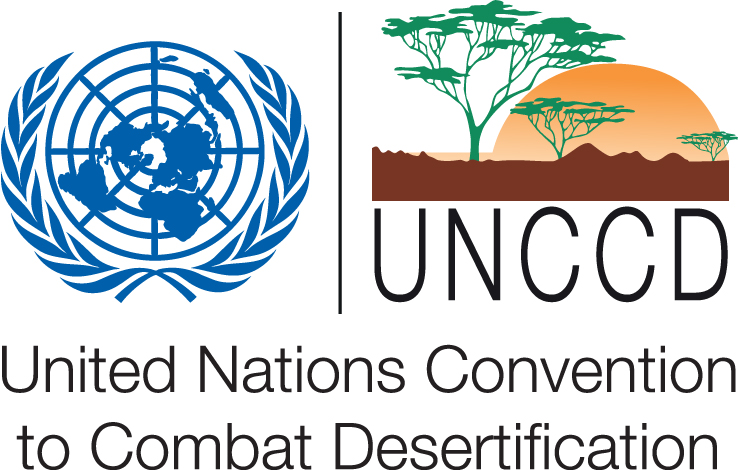We're Turning Our Land to Sand

We're turning our land to sand
On Sunday it was the World Day to Combat Desertification, and I suspect the term desertification will conjure up images of expanding deserts or shifting sand dunes. This is what I often hear, followed, almost predictably by the statement, "why should I care since we cannot do much about it."
But what would you say to Yacouba Sawadogo, the humble villager in rural Burkina Faso, whose efforts to keep his small patch of land productive have travelled from village-to-village across three countries. The end result? Over five million hectares of reforestation including through farmer-managed natural regeneration of degraded lands. And what do we say to the Haranne family in Djelfa, Algeria, that now enjoys an income of US$8,000 per year after restoring land that was once buried in sand?
The fight against desertification is a fight to save land productivity and soil fertility in the arid, semi-arid and dry-sub humid areas or drylands, as they are simply called. It is a fight to prevent the creation of man-made deserts in areas that have served us so well in the past.
One of the environmental movement's best kept secrets is that drylands supply the world's breadbasket. They account for 44 per cent of all cultivated systems and 50 per cent of the livestock. Common foods like barley, rye, saffron and olives, as well as cotton originated here. More importantly, they still harbour some of their wild relatives. In fact, one in every three plants that we cultivate is from the drylands.
Australia is a prime example of this value. Only six per cent of the land can be farmed without irrigation. Yet, agriculture takes up 60 per cent of the total land area, with livestock grazing as the most extensive use.
To be sure, combatting desertification is not only fighting to ensure future generations can enjoy a bag of potato chips and a salad laced with olives. It is about ensuring there is food on the table, access to clean and safe water and energy to use today, and everyday.
But it cannot be done without ending land and soil degradation. More so, because by 2030, global food needs will grow by 50 per cent, water by 30 per cent and energy demand by 45 per cent, claiming more productive land.
But every year, 12 million hectares of land is lost through desertification and drought alone. This is an area half the size of United Kingdom and could produce 20 million tonnes of grain per year. Globally, about 75 billion tonnes of fertile soil is lost forever each year. Overall, about 1.5 billion people live off degrading land, of whom 74 per cent are the poor.
More significantly, land degradation exceeds its restoration. The 2011 report of the Food and Agriculture Organisation of the United Nations claims that 25 per cent of the land is highly degraded while only 10 per cent is improving. In Australia, soil fertility is declining in 33 per cent of all cropped land.
Continuing with business as usual means that by 2035, global food production could fall by 12 per cent due to land degradation alone. This would increase world food prices by up to 30 per cent. Otherwise, about 120 million hectares of new land must be cleared to meet the expected increase in food demand. Currently, 70 to 80 per cent of deforestation is due to cropland expansion. Is this sustainable?
The alternative is to restore degraded land at a much faster rate than its degradation. There is good reason to do so. Globally, more than two billion hectares of land can be restored through forest and landscape restoration. It could help offset any use of new land.
Of this, 1.5 billion hectares is suitable for mosaic restoration, including through agroforestry and small-holder agriculture. This focus would alleviate poverty and restore degraded land for millions of families that live like the Sawadogo's and Harranne's once did.
But three things stand in the way.
First, political will is lacking because drylands and other degraded areas are viewed as marginal land that we can afford to abandon. So, there is little interest to invest in these areas.
Second, there is a very weak link between science and policy at all levels. Since the issue is complex, diagnosis must be site specific. Even so, there is much to gain from having a credible scientific body to guide consensus building on crucial issues like monitoring and assessment.
Lastly, it is often argued that one can only improve what one can measure. So, the lack of an institution to monitor these trends at all levels and across all land ecosystems is a serious policy gap.
To be sure, there is some progress, but it is time that every society, Australians included, began to challenge misperceptions and offer solutions to speed up the change.
Our experience of 20 years tells us that we need to change course by first, agreeing on the goal of sustainable land use for all and by all, with targets to be achieved in a given time. Healthy soil sustains our life, so each of us must do all we can to become land degradation neutral.
This is the essence of this year's World Day to Combat Desertification message. It is also the message to the heads of State and Government meeting in Rio this week because this may be our best chance to shape The Future We Want. But it all depends on whether the civil society, that is you and I, make our voices heard now and long after the dust of Rio+20 has died down.

